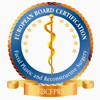Bell's Palsy is an uncomfortable condition that causes sudden loss of strength or temporary paralysis of the facial muscles. It is usually characterized by a marked weakness or drooping of one side of the face. Whether you or someone you know has experienced this condition, having information about what Bell's Palsy is, symptoms, causes and treatment options is of great importance in understanding and managing the process. At this point, we have created Bell's Palsy content to guide you. By reviewing the content, you can have detailed information about bell's palsy. We wish you all healthy days and good reading.
What is Bell's Palsy?
Bell's palsy, which differs from other types of facial paralysis in many ways, is a temporary muscle weakness on one side of the face. The cause of this weakness is generally sagging or stiffness on one side of the face due to unspecified conditions. In this context, the symptoms that the patient shows in the first 48 hours increase and worsen, and Bell's palsy symptoms, which are seen as muscle weakness, muscle spasms and facial sagging, disappear in a short time when intervened in a timely and correct manner.
Research shows that the incidence of Bell's palsy increases in certain age groups and in people with a history of the disease. Bell's palsy can be seen in a certain percentage of women, especially during pregnancy. Although there are many reasons for this, pregnancy-related problems can be triggering, so the most important element of Bell's palsy treatment is timely intervention. For this reason, improvement can be achieved in a short time by starting physical therapy and medication support within the first 72 hours.
What Causes Bell’s Palsy?
Although the causes of Bell's Palsy are not known exactly, it is thought that various diseases trigger facial paralysis. As a result of research, an increase in Bell's palsy symptoms has been observed in people with some diseases. If you ask what are the causes of Bell's palsy, we can say the following.
- High blood pressure
- Diabetes
- Edema and fluid retention in the body
- Lyme disease
- Pregnancy
- Genetic predisposition
- Hereditary factors
- Sarcoidosis
- Middle ear inflammation
- Presence of viruses such as herpes, shingles, HSV
The causes vary depending on the person, the patient's health history and other factors. Early diagnosis and intervention can improve the causes.
Bell’s Palsy Symptoms
If the symptoms of Bell's palsy on one side of the face are known, a doctor can be consulted as soon as possible and necessary measures can be taken. Although symptoms vary according to the person, Bell's palsy recovery time is approximately the same. At this point bell's palsy symptoms;
- Facial paralysis on one side of the face
- Sagging of the face
- Salivation from the mouth
- Headache
- Decreased sense of taste
- The paralyzed side is more sensitive to sound
- Increased saliva
- Increased lacrimation
- Jaw pain
- Irregular movements of the smile
- Difficulty blinking or closing the eyelid
- Failure to close the eye on the paralyzed side
- Muscle weakness on one side of the face
Patients may experience one or more of these symptoms. Within the first 72 hours after the onset of Bell's Palsy symptoms, treatments can be started to reduce swelling and prevent paralysis.
What Are The Risk Factors For Bell’s Palsy?
Since it is important for prevention to be careful in groups where Bell's Palsy is more frequently observed, pregnant women in the third trimester of pregnancy have a higher percentage of risk. It can be seen in this period as well as in the first weeks after birth. The reason for this is that pregnant women are immunocompromised against HSV and other viruses during these time periods. Pregnant women with a weakened immune system will develop Bell's palsy due to infection.
Other people in the risk group are those with hereditary diseases. There is also a risk factor for those who have a family history of such diseases and are prone to stroke. Blood pressure, obesity, diabetes, etc. also constitute risk factors.
Who Has a Higher Rate of Bell's Palsy?
The incidence of Bell Palsy is higher in some people. The reason for this can be called diseases and some structural problems. In this context, knowing who is in the risk group makes it easier to take preventive measures. Who has Bell's Palsy more often?
- Those with high blood pressure
- People with diabetes
- People with upper respiratory tract infections (flu, cold, etc.)
- Obesity
- Those in the last trimester of pregnancy
- Within 7 days to 10 days after delivery
Studies and an increase in the number of cases show that people with this disease group and pregnant women are at serious risk.
Bell’s Palsy Diagnosis
In the case of Bell's palsy, the doctor first checks for nerve and muscle disorders in the face. A physical examination is essential for this. He or she will examine the causes of facial paralysis and try to make the correct diagnosis. Some Bell's palsy symptoms can be confused with other types of facial paralysis or diseases. To prevent this, diagnostic methods are used to make Bell's palsy treatment correct.
In this respect, physical examination is very important for diagnosis. After examining the patient's neck, head and ears, some tests are performed to examine the condition of the nerves, muscles and the region. A definitive diagnosis can be made with multiple and different tests. These tests are as follows;
- Hearing tests: This is done to determine whether the damage to the nerves affects the inner ear or the auditory nerves. Because in Bell's Palsy, the paralyzed side experiences sound sensitivity. This makes it more possible to make a definitive diagnosis.
- Medical imaging techniques: With medical imaging techniques, it can be faster and easier to detect tumors, infections and anomalies by scanning the facial nerve area. MRI and CT tests can be used for this.
- Electrical testing of facial nerves: By applying electrical tests to the facial nerves, the extent of damage to the nerves can be clearly assessed. These are the nerve tests in question;
- Nerve excitability test (NET)
- Electromyography test (EMG)
- Electroneurography test (ENoG)
What Are the Different Types of Bell’s Palsy Testing?
Bell's Palsy tests differ because the evaluation criteria are different. Each test is considered important to reach a different conclusion. These tests will provide information about the Bell's palsy nerve and the general course of the disease, and will also allow you to check at regular intervals. Other tests used to diagnose Bell's palsy include
- In facial paralysis, tumor and infection are considered as the onset of the disease. However, the presence of a tumor is not sought for Bell's Palsy. Due to the suspicion of inner ear infection, the presence of a head and neck tumor is checked. If dizziness etc. is experienced in Bell's palsy, it also detects this.
- A vestibular test is performed to check the stability of nerve balance.
- A hearing test is used to check for hearing loss or problems in the inner ear.
- A neurological assessment is performed to test the patient's movements, reflexes and consciousness.
- The tear test evaluates the tear function.
- CT scan of the neck and temporal bones is used to evaluate the presence of the tumor.
These tests are extremely useful to better diagnose the type of stroke and find the appropriate treatment.
Treatment Options for Bell’s Palsy
Bell's palsy treatment in developing facial paralysis depends on the presence of causes. Therefore, if there is no tumor, trauma and inner ear infection, the patient is likely to have Bell's palsy. For this reason, since each patient has a unique history and Bell's palsy symptoms, the treatment is applied accordingly, and medication, rehabilitation and other options will be considered according to the patient's condition.
- Surgery is another option if there are no signs of Bell's palsy recovery despite using medications.
- Facial nerve decompression surgery is preferred for facial dysfunctions.
- If eye problems are persistent, it is important to make an appointment with an ophthalmologist and add it to the treatment. The ophthalmologist may order the use of methods such as taping the eye or wearing an eye patch.
- Facial resuscitation surgeries are considered in cases of permanent damage. Grasilis muscle transplantation, cross nerve graft, temporalis myoplasty, nerve transfer are preferred depending on the situation.
- Selective neurolysis surgery is another option.
- Facial nerve strengthening surgery may also be preferred.
- Eyelid weight implantation may also be a good choice.
- Gold weight implantation works well for eyelid dysfunction.
The patient's general condition should be evaluated and a road map should be determined according to the symptoms over time. After the doctor applies the treatment techniques, the Bell's palsy recovery time is determined. He/she will be able to use other treatment options according to this and according to the patient's request.
Bell's Palsy Recovery Time
If interventions are made within the first 72 hours, the process can be overcome without damage. During this time, high-dose antiviral drugs, steroids and rehabilitation are carried out together and Bell's palsy recovery signs begin to be seen over time. In some patients, it is possible to recover in 3 to 6 months even without any intervention.
Bell's palsy recovery signs may disappear completely after 2 weeks to 6 weeks. Managing the process correctly and contacting your doctor when symptoms are felt will save you time. This will shorten the Bell's palsy recovery time as the possibility of persistence will decrease. Interventions can be made to alleviate symptoms and improve the person's standard of living. The doctor will give the most accurate information according to the person's condition.
Selective Neurolysis Surgery For Bell’s Palsy
Selective neurolysis is a good choice when symptoms do not decrease or Bell's Palsy becomes permanent. For this reason, selective neurolysis allows the patient to have a natural smile. With this method, not only the smile is revitalized. As the compressed muscles will be left alone, the lost functions will also be restored.
The doctor first maps the facial nerves. If the patient is a candidate for the selective neurolysis technique after Bell's Palsy, this method is applied. The position and condition of the nerves are determined by EMG. Then, when the platysma muscle, which pulls the corner of the mouth downwards, is released, a natural smile directly appears on the face. There is no need to be hospitalized for treatment and you can see the effects and results of the surgery in a short time. Since the risk of surgery is also low, it is a safe method.
Bell’s Palsy After Surgery
If Bell's palsy recovery takes 18 months or longer, surgery is considered if full recovery is not achieved. It is known that Bell's palsy symptoms decrease after surgery. The patient has a natural appearance and facial symmetry is also achieved. Frowning, facial expressions and gestures also become easier.
After surgery, which has an important place in Bell's palsy treatment, physical therapy and rehabilitation program should be taken together for a full recovery. Physical therapy is important to teach the reconstructed facial muscles how to work. While results can be obtained months after surgery, Bell's palsy recovery time may take years. Therefore, being patient and consistent is very important for a full recovery.
Things to Pay Attention to After Bell's Palsy Treatment
It does not matter whether the treatment is with medication, rehabilitation and physical therapy or after surgery. Patients should pay attention to the things to be considered after Bell's Palsy treatment. In this way, the permanence of recovery will also be ensured. Things to consider after Bell's Palsy treatment;
- Although it is not possible to eliminate the causes of Bell's Palsy, it is important to keep up with routine medications to minimize the causes.
- Physical therapy and rehabilitation programs should be continued for a while.
- Care must be taken to avoid conditions caused by infections and viruses.
- You should consult a doctor immediately if you feel a difference in your face or if you think the symptoms are returning.
- If you have had surgery, you should follow the doctor's instructions. You should not neglect physical therapy.
- You must be patient when teaching the muscles to work.
- Psychologically, you should try to feel good and be strong.
Signs of Bell's Palsy Recovery
If the person is slowly returning to pre-Bell's Palsy, if the symptoms have decreased, they are showing signs of recovery. However, if the strong symptoms are relieved and the contractions are reduced and the pressure on the muscles is no longer applied, this is a sign that you are recovering. If the patient's sense of taste has disappeared and returned, this is also a sign of recovery. Since Bell's palsy recovery signs will vary according to the patient, you and your doctor will give the most accurate information on this subject. Your doctor will look at the condition of the muscles and nerves and give you clear information about recovery.
FAQ
Is Bell’s Palsy Contagious?
Bell's palsy, which occurs in the 7th cranial nerve in the face, is not contagious. Muscle weakness on one side or sagging of the face has nothing to do with contagiousness. Some underlying causes cause the disease to occur.
How Long Does Bell’s Palsy Last?
The person's disease history, health history and general health affect Bell's palsy recovery time. If treatment with antiviral medication and steroid medication takes place within the first 72 hours, facial paralysis disappears in a short time. Complete recovery is seen in the first 3 months. In some patients, this period may take up to 6 months. If physical therapy and drug treatment are not carried out together or in the presence of other causes, a small degree of persistence is observed.
What Are the Potential Side Effects of Bell’s Palsy?
Bell's Palsy side effects can also be called symptoms. Bell's Palsy side effects in general terms; Headache, Saliva flow from the mouth, Jaw pain in the paralyzed area, Ear pain sound sensitivity in the paralyzed area, Muscle weakness, Loss of taste, Loss of mimics. However, these symptoms may vary according to the patient.
Is Bell’s Palsy Permanent?
Although it is defined as short-term facial paralysis, Bell's Palsy can be permanent in some people. This possibility is low and the risk of permanence is eliminated with timely intervention.
Is Acupuncture an Effective Bell’s Palsy Treatment?
Acupuncture can be used alongside medical treatments, medication, physical therapy and rehabilitation support. Acupuncture treatment is effective for hard-to-heal types of paralysis and Bell's Palsy.
Is ozone therapy good for Bell's Palsy?
Ozone therapy can be used for Bell's Palsy as it removes antioxidants from the body and increases blood circulation. Increased oxygen in the blood also helps the mobility of muscles and nerves.














